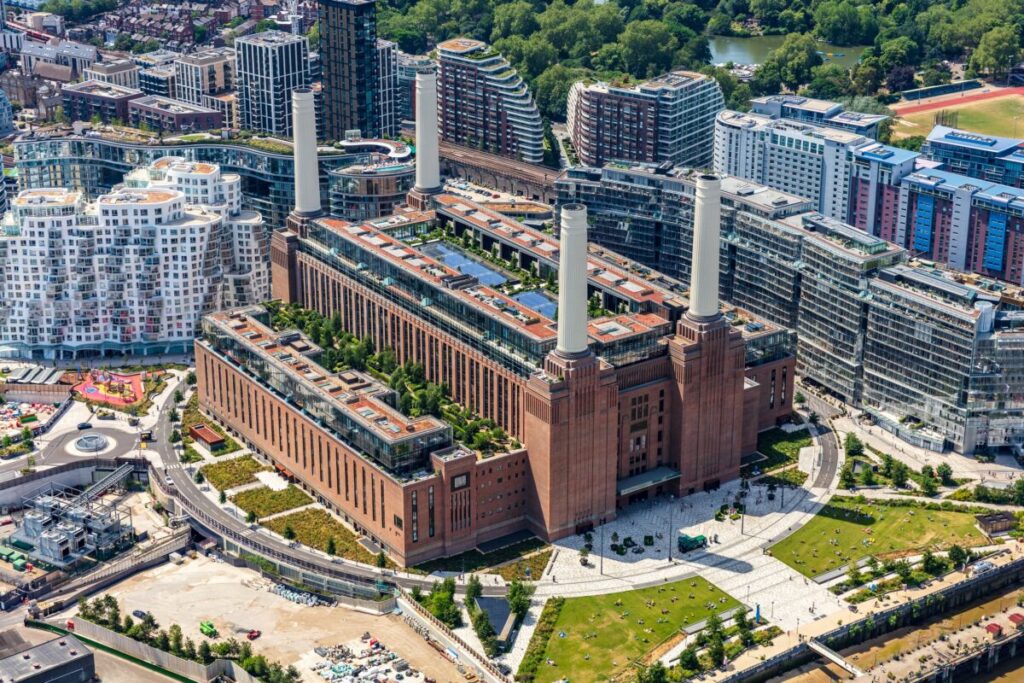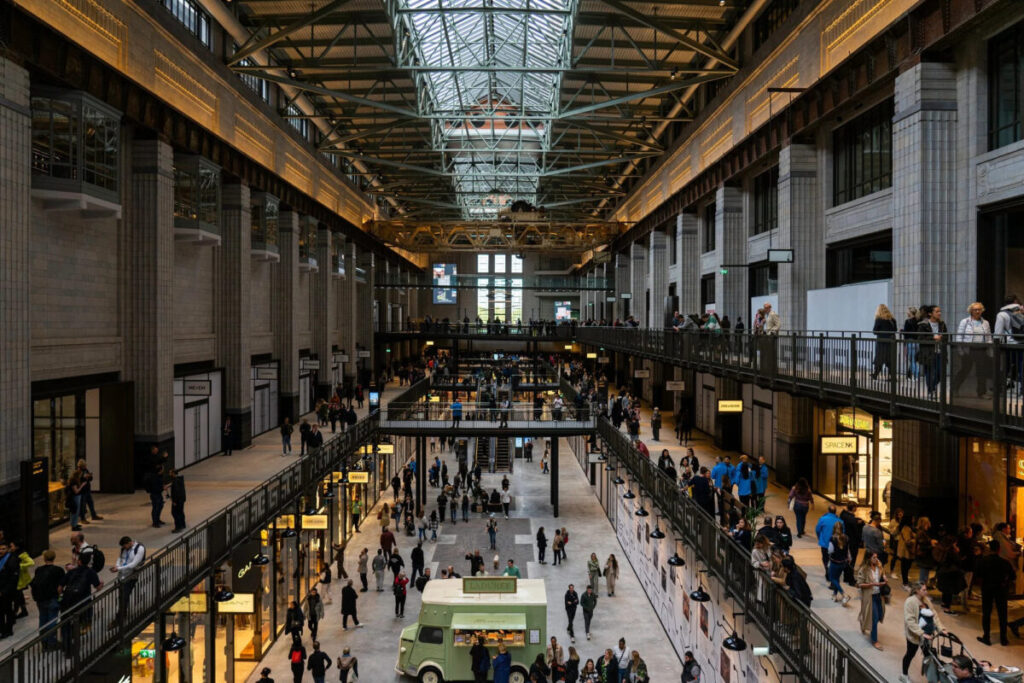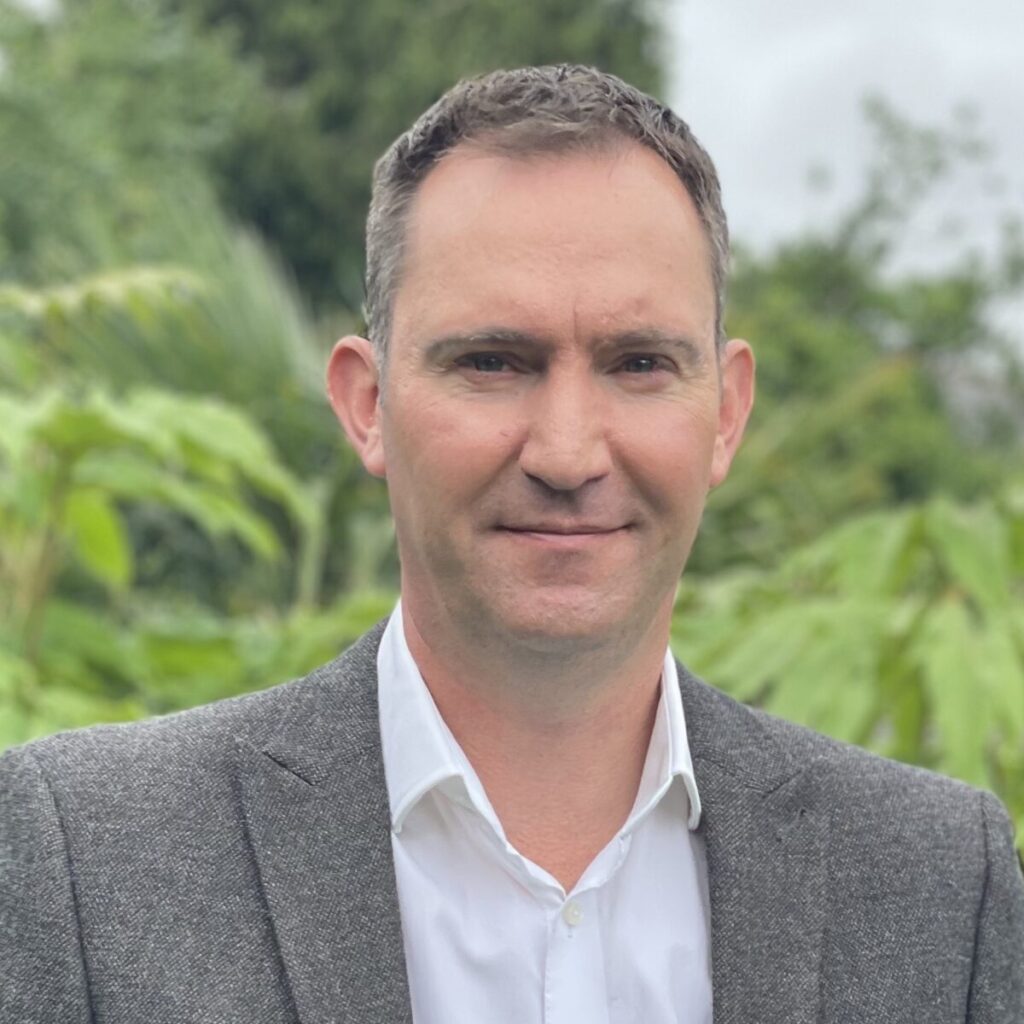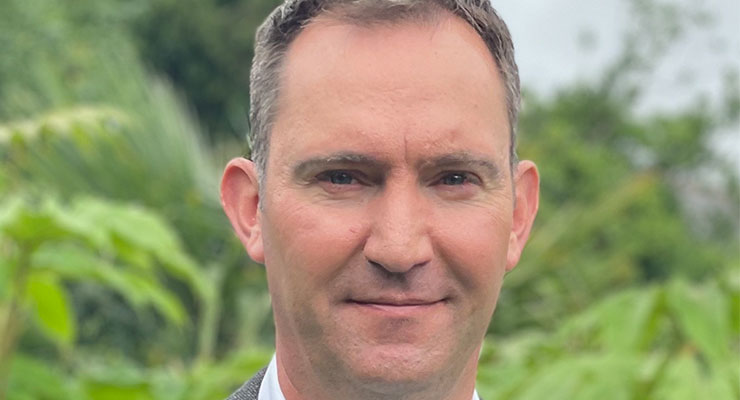ACROSS: WE HEAR A LOT ABOUT THE TRANSFORMATION OF THE CRE INDUSTRY. WHERE DO YOU THINK THE FOCUS SHOULD BE?
DAVID FULLER-WATTS: For many years, the real estate industry and those that service it, including proptech, have been talking about transformation. Over the years, we have heard of terms like placemaking and flexible working and seen the prevalence of sustainability. ESG has probably been one of the most notable topics. However, one area that we don’t talk about enough is community. I believe that it is the most crucial factor in affecting change. Community in real estate is often thought about in terms of different groups coming together to engage with a space, and behavior is changing with tenants and consumers wanting more from their spaces. The evolution of the office is perhaps the most stark example of this. We all know that cubicles and buildings that lack amenities or space for collaboration are no longer fit for purpose. The onus is on creating places where people live, work, and play, shifting towards environments that bring these elements together. However, I would challenge this further, suggesting that simply putting the correct elements in place does not build community.
ACROSS: SO, WHAT BUILDS A COMMUNITY?
FULLER-WATTS: As a foundational principle, I do, of course, believe it is vital that people have access to great spaces. We’ve seen how architecture, design, amenities, and even acoustics have a strong positive impact. However, community comes from creating a sense of belonging, enabling people to take pride in their surroundings. This creates an environment that people want to actively be in. A destination becomes more than the sum of its parts. A great example is Battersea Power Station in London, which has curated a mix of shopping, dining, and living but has not forgotten that these things alone are not enough. The destination also focuses on the experience, everything from the history, the part the building has to play, having events at the location, connecting people to the information they need to know what is going on, to ensuring that it is easy to navigate, and a clean, safe environment to visit. A resident or visitor can trust that if they go there, they can get everything they need, and engage with every aspect of the destination.


Battersea Power Station has curated a mix of shopping, dining, and living but has not forgotten that these things alone are insufficient.
ACROSS: SO, IS THE COMMUNITY JUST FOR END USERS?
Fuller-Watts: We often look at community from an end-user perspective, which is the most tangible. While that is incredibly important, as without people coming to a destination, it wouldn’t survive, it is about more than that. The community is 360. It’s about ensuring office workers have the right environment, retailers know they are part of a great destination, center managers can take pride in an asset’s performance, and commercial real estate owners understand the value of their asset. Every person or function has a part to play, from security to facilities management to marketing managers.
ACROSS: HOW DO YOU ENSURE THAT COMMUNITY BUILDING DOESN’T FEEL FORCED?
FULLER-WATTS: There are vital considerations that are important to any thriving community: location is essential (whether that be a town center or building a community around a destination shopping center), the space itself needs to be fit for purpose, and then you need to understand people and performance. The real estate industry has decades of experience understanding location and knowing how to evolve physical assets effectively. However, ticking these boxes doesn’t mean people will show up and find a sense of belonging – it’s too forced, and community is more emotive than that. And in today’s world, where we have access to the data and insight that enables a greater understanding of how an asset is used – you don’t need to force anything. With access to the right technology, asset owners and operators can utilize data to have unparalleled insight into curating a space people want. This can take many forms, from predictive analytics as to which type of brand to have at a location, understanding the flow of people through a space, gaining profound insight into performance with sales data, and utilizing technology for security to ensure that everyone at a destination feels safe. Technology is removing the guesswork, improving communication, and providing the operational efficiency that brings together all elements of a space, ensuring that communities can grow and thrive.
ACROSS: WHY IS COMMUNITY SO IMPORTANT TO YOU? WHAT ABOUT SUSTAINABILITY?
FULLER-WATTS: That is a valid question; the environment should be at the forefront of our agendas. The real estate industry has come a long way in prioritizing sustainability. However, I think there is another way of looking at how we create sustainable environments – and that is by building communities that are empowered to make a difference. If you care about a destination, you want it to be clean, you want it to be there for the long run, and you take pride in its operation. If a community pulls together, that is a compelling thing. For example, if you were to take a mixed-use destination that you loved to be in, that you spent either your weekends at or that you live in if that vibrant community were successful and profitable so that money could be reinvested into its future, there wouldn’t be a question from anyone – end user through to investor – about whether or not air quality should be monitored, or electricity usage should be sustainable – it would all be for the betterment of the community. I see community as the foundation for success, whether for sustainability initiatives, safety, or profitability – without it, it’s much harder to have a positive impact.
ACROSS: COULD YOU SHARE AN EXAMPLE OF HOW MALLCOMM’S TECHNOLOGY HAS IMPROVED A COMMUNITY?
FULLER-WATTS: That speaks to the heart of everything we do. Our tech exists to create communities that are empowered to be successful. One example that stands out and will probably resonate with us all is the time in 2020 when COVID hit and various lockdowns were imposed. We had onboarded a new US East Coast shopping center a few months before the pandemic. Not long after, we entered a confusing time when different rules and regulations were being enacted. There was a growing amount of misinformation, especially from social media. Mallcomm was able to serve as the primary source of truth for information to flow through to vendors, contractors, suppliers, and managers. Each of them could access the correct information and able to remain compliant. The fact that Mallcomm could provide a single source of truth meant that before long it wasn’t just the immediate users using the app, but broader areas. The community within the city had a way of linking together and having a point of trust at a difficult time.
ACROSS: AS TECH CONTINUES TO THRIVE, HAVE PROPERTY AND ASSET MANAGERS HESITATED TO ADOPT NEW TECHNOLOGIES?
FULLER-WATTS: Most modern real estate owners and operators understand the benefits of data and technology. However, there is so much tech out there that it is challenging to know where to start. It’s not just about knowing you need data, but first, you need to have a clear strategy as to what data you need, find a way to capture it, and then be able to interpret it meaningfully. Not only are there a confusing number of tech point solutions available to purchase, but they can be expensive. As several tech companies are still relatively young, there is risk around track record or longevity. Trying to navigate the best way to adopt technology can, therefore, be a minefield with so many solutions available it’s difficult to know where to start. Is sustainability the most important? Is it security? Measuring footfall could be helpful, but is understanding buyer loyalty habits more important? There are a multitude of questions to ask. Don’t get me wrong, early adopters have embraced technology, and most real estate companies have a tech strategy in play – but there was hesitancy to execute at speed – which isn’t necessarily bad.
ACROSS: WHY IS THAT?
FULLER-WATTS: In areas where we have seen rapid adoption of tech without hesitancy, we saw the onboarding of multiple point solutions, or heavy investment into building tech in-house, to great expense and little ROI. The real estate industry has matured a lot, and most understand that the answer is not to have technology but to have the right technology. We shouldn’t think of it as hesitancy but as a time to identify pain points and develop strategies. They know what they need: an established provider to mitigate the risk that knows their sector adapts the tech with them and provides a platform that creates savings by consolidating other technologies. Now the industry has gone through that learning curve, we are seeing a rapid flight to adoption. Notably, we are witnessing the adoption of must-have technologies that are transforming asset performance at the property and portfolio levels.

David Fuller-Watts
David Fuller-Watts is CEO of Mallcomm






